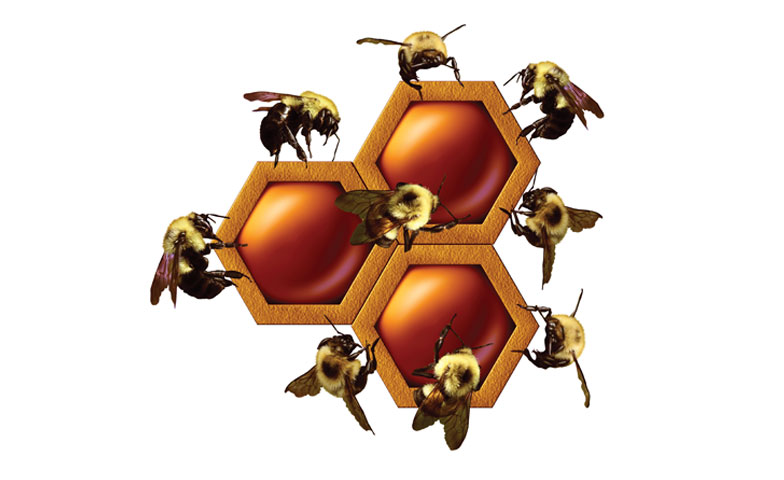Three team approaches that respond to students’ unique needs
From the inception of the middle school movement, team approaches to instruction were considered the preferred way to organize a school housing grades 4-8, 5-8, or 6-8. Today, educators see teaching teams as a key to achieving the full potential of a dynamic middle school, one that truly responds to the unique physical, intellectual, social-emotional, and moral developmental needs of young adolescents. Teams may be established on a core interdisciplinary, single subject, or exploratory multi-disciplinary basis. In the most dynamic settings, dialogue and fluidity connect these three systems.
Three Approaches to Teaming
Core Interdisciplinary Teams
Typically, core interdisciplinary teams include teachers of English/language arts, social studies, mathematics, and science. Special education and English language learning (ELL) teachers are frequently included. Ideally, the same teachers have the same cohort of students during the same periods of the day. Common planning time is essential. See core team schedule in figure 1.
![]() Figure 1
Figure 1
Core Team Schedule
When there are several interdisciplinary teams at a grade level and when sufficient seats exist in the exploratory classes for students from both teams at the same time (see example of exploratory team schedule in figure 3), TM (team meeting) could become TM/DM (team meeting/department meeting). On some days each interdisciplinary team meets separately; on other days teachers could meet by subject area. Whenever appropriate, teachers from both teams could meet.
Single Subject Teams
Some middle school schedules feature departmental or single subject teams to enable mathematics or physical education teachers to meet instead of, or in addition to, an interdisciplinary structure. Team meetings are dedicated to curriculum study, pedagogy, and grouping or re-grouping students based on need for remediation or readiness for enrichment. See schedule example in figure 2.
![]() Figure 2
Figure 2
Single Subject Team Schedule
Exploratory Teams
Teachers of art, music, world language, physical education, technology/STEM, and family and consumer science form the exploratory team. These teachers meet by subject areas or as a complete exploratory group for issues common to the program. Teachers can have the opportunity to integrate curriculum and skills, focus on student needs and plan special interdisciplinary units or activities. See figure 3 for an exploratory team schedule.
![]() Figure 3
Figure 3
Exploratory Team Schedule
Role and Function of Teams/Planning Cohorts
Teams or planning cohorts become dynamic when they understand, implement, and integrate all four domains of their role and function. The following strategies organized by domains are typical of teams/cohorts seeking excellence.
- Respond to needs and data
- Master the research and literature regarding physical, intellectual, social-emotional, and moral developmental needs of young adolescents.
- Identify strategies to respond to these needs as a team and as individual teachers.
- Remain current on available data regarding reading, mathematics, and other tested areas.
- Plan advisory experiences that are developmentally appropriate.
- Integrate curriculum and skills
- Recognize that students learn best when they connect new knowledge and skills to previously learned information; students should recognize patterns and relationships.
- Develop a curriculum matrix at the outset of the school year. Alter as needed.
- Become familiar with local, state, and national standards; identify standards that cut across content areas.
- Implement a skill-of-the-week program.
- Establish a communication system to maximize opportunities for curriculum integration throughout all content areas.
- Share appropriate teaching/learning strategies
- Explore research-based strategies as well as best practices appropriate to students’ developmental stages.
- Utilize results of interest and learning style inventories in planning units and lessons.
- Encourage hands-on activities and project-based learning.
- Recognize value of group engagements that enhance social-emotional maturation.
- Maximize available time creatively
- Analyze master schedule to identify opportunities for flexibility
- Create a menu of flexible options available to the team: alter the sequence of classes; large group instruction; adjusting the length of instructional modules; grouping and re-grouping of students; project or independent study time and use of the flex/advisory/intervention period (FAI).
- Establish procedures for decision-making and informing students of schedule modifications.
Each of these domains may be seen as an independent variable. The true potential will be achieved when all team members effectively integrate the four domains: responding to student needs, integrating curriculum and skills, sharing successful teaching/learning strategies, and maximizing time creatively.
Self-Assessment
With the ongoing challenges of teacher evaluation, assessment, and review, districts and schools should consider allowing teaching teams the opportunity to create or utilize a self-assessment instrument. Based on intrinsic professional motivation, this opportunity could be a significant step to implementating the team approach to instruction and ultimately the potential of the middle school concept. Ideally, each district,school, or team could develop its own instrument following this list of sample questions and the format to facilitate communication among colleagues (see figure 4).
![]() Figure 4
Figure 4
Self-Assessment Example
Summary
Teaching teams that master the integration of the four domains—responding to student needs, integrating curriculum and skills, sharing successful teaching and learning strategies, and maximizing available time creatively—are key to achieving the ultimate vision of the middle school concept. Steps toward this goal occur when school schedules are created that set the stage for core interdisciplinary, single subject, and/or exploratory teams.
